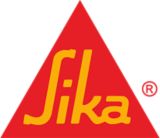
SikaTile®-904 Deck Mud
SikaTile®-904 Deck Mud is a Portland Cement based tile mortar that is used as a mortar setting bed on horizontal surfaces. This product is pre-blended and packaged in 60 lb. bags for easy handling or produced in bulk. Available in Northern California only.
- Easy to use
Usage
For use as a bonded or non-bonded, conventional thick mortar bed on horizontal surfacesAdvantages
- Easy to use
Packaging
- 60 lb (27.18 kg) bag
- Bulk/Silo - call for details
Color
Manufactured in gray only
Product Details
APPROVALS / STANDARDS
Raw materials meet or exceed the following standards:
- Portland Cement Type II/V ASTM C-150
- Mortar Sand ASTM C-144
Shelf Life
12 months from date of production if stored properly in original, unopened and undamaged sealed packaging
Storage Conditions
Store dry at 40–95 °F (4–35 °C)
Protect from moisture. If damp, discard material
Application
Mixing Ratio
1/2 gal (1.9 L) of water per bag
Coverage
| Thickness | 60 lb. bag | Bulk 1 ton |
| 1" (25.4 mm) | 7.2 ft2 (0.66 m2) | 220 ft2 (20.4 m2) |
| 1.5" (38.1 mm) | 5.4 ft2 (0.50 m2) | 165 ft2 (15.3 m2) |
| 2" (50.8 mm) | 3.6 ft2 (0.33 m2) | 110 ft2 (10.2 m2) |
MIXING
This product only needs the addition of clean potable water to achieve the desired consistency.
FAQ
No, they are not. For standard-size tile < 15”, the substrate flatness tolerance is no more than ¼” variance in 10”. For tile > 15”, the substrate flatness tolerance is no more than 1/8” variance in 10’. This applies to any substrate whether it is a wall, floor, ceiling etc.
No. Thinset is an adhesive, not a patching or leveling compound. Thinsets are
designed to be a certain thickness and when that thickness is greater than what the thinset can handle, shrinking will occur. Use a product that is designed for patching or leveling.
Some old “cutback” black residues may contain asbestos. If the residue has asbestos, a professional will need to remove it. If the black residue does not contain asbestos, it may be removed by mechanical means such as sand blasting or grinding. Some products can encapsulate the black residue, preventing mechanical removal. Check Technical Services to find the correct products.
In most cases, flat is better than level. For example, an exterior deck needs to be flat and not level. Building codes require the deck to be pitched away from the building, which would make the deck not level. But, to install tile the deck must be flat. So, it all depends on the application.
No, they are not. For standard-size tile < 15”, the substrate flatness tolerance is no more than ¼” variance in 10”. For tile > 15”, the substrate flatness tolerance is no more than 1/8” variance in 10’. This applies to any substrate whether it is a wall, floor, ceiling etc.
No. Thinset is an adhesive, not a patching or leveling compound. Thinsets are
designed to be a certain thickness and when that thickness is greater than what the thinset can handle, shrinking will occur. Use a product that is designed for patching or leveling.
Some old “cutback” black residues may contain asbestos. If the residue has asbestos, a professional will need to remove it. If the black residue does not contain asbestos, it may be removed by mechanical means such as sand blasting or grinding. Some products can encapsulate the black residue, preventing mechanical removal. Check Technical Services to find the correct products.
In most cases, flat is better than level. For example, an exterior deck needs to be flat and not level. Building codes require the deck to be pitched away from the building, which would make the deck not level. But, to install tile the deck must be flat. So, it all depends on the application.
